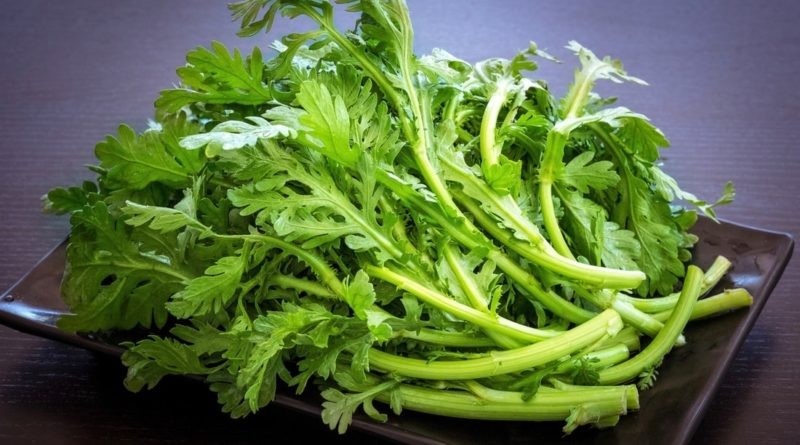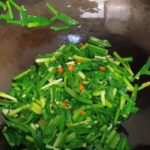In the Tang Dynasty, the physician Tôn Tư Mạc highly regarded watercress. He believed that this vegetable had a sweet and spicy taste, a cool property, and was non-toxic. It is an extremely beneficial vegetable for internal organs, including promoting blood circulation, nourishing the heart, moisturizing the lungs, relieving cough, and calming the mind.

According to modern medical research, watercress is rich in nutrients such as Vitamin K, protein, carotenoids, and various amino acids. It promotes good sleep, nourishes the liver, improves vision, cleanses the lungs, relieves constipation, lowers blood pressure, protects the brain, nurtures the heart, and purifies the blood.
Among these nutrients, Vitamin K is essential for promoting blood clotting and maintaining the normal function of the liver.
Therefore, watercress can be considered an excellent vegetable for internal organs.
4 ways to consume watercress for good health
1. Treating chronic cough with watercress
Prepare 100-150g of watercress and 200g of pork lung, cut into pieces. Cook the ingredients into a soup and consume both the solid and liquid parts with rice for 3-4 days as a treatment.
2. Stabilizing blood pressure
In addition to taking prescribed medication, patients with high blood pressure should also follow a diet that is low in spices and fats. Adding watercress to meals is beneficial because it is rich in amino acids and essential oils, which help clear the mind and stabilize blood sugar levels.
Watercress can also be juiced, with a daily intake of 50ml in the morning and evening. This is suitable for people with high blood pressure accompanied by headaches and dizziness.
3. Treating chronic headaches
Take a small amount of aged watercress, particularly those with flowers, and boil the whole plant, including the roots, to extract the liquid. Consume 30g of the boiled watercress daily.
In addition, apply hot watercress leaves to the top of the head and both temples in the evening before going to bed (or whenever experiencing headaches).
4. Stabilizing blood sugar levels
Prepare 60g of watercress, 1 bundle of pig liver leaves, and 3 eggs. Rinse the pig liver leaves, chop them, and cook them without salt. Then, add 3 beaten eggs and the watercress. Cook until done, and consume both the solid and liquid parts.
Note:
Due to its cool property, watercress should be avoided by individuals with diarrhea, weak constitution, or cold abdomen.
Watercress is prone to parasite infestation, so it should be thoroughly cooked before consumption.

Watercress takes some time to show its effectiveness, so it needs to be consumed continuously for 3-10 days to achieve the desired results. In cases of serious illness, it is advisable to consult a doctor for effective treatment methods and not rely solely on watercress, while neglecting other medical interventions.
“Organ-nourishing” vegetables used to be limited to emperors, but now they can be found in every home garden.
Among the various methods of nourishing the liver, the most cost-effective one is to consume a lot of watercress. Watercress was once renowned as the “food of the Emperor” since it was frequently served in the royal court.
In the Tang Dynasty, the physician Tôn Tư Mạc highly regarded watercress. He believed that this vegetable had a sweet and spicy taste, a cool property, and was non-toxic. It is an extremely beneficial vegetable for internal organs, including promoting blood circulation, nourishing the heart, moisturizing the lungs, relieving cough, and calming the mind.
According to modern medical research, watercress is rich in nutrients such as Vitamin K, protein, carotenoids, and various amino acids. It promotes good sleep, nourishes the liver, improves vision, cleanses the lungs, relieves constipation, lowers blood pressure, protects the brain, nurtures the heart, and purifies the blood.
Among these nutrients, Vitamin K is essential for promoting blood clotting and maintaining the normal function of the liver.
Therefore, watercress can be considered an excellent vegetable for internal organs.
4 ways to consume watercress for good health
1. Treating chronic cough with watercress
Prepare 100-150g of watercress and 200g of pork lung, cut into pieces. Cook the ingredients into a soup and consume both the solid and liquid parts with rice for 3-4 days as a treatment.
2. Stabilizing blood pressure
In addition to taking prescribed medication, patients with high blood pressure should also follow a diet that is low in spices and fats. Adding watercress to meals is beneficial because it is rich in amino acids and essential oils, which help clear the mind and stabilize blood sugar levels.

3. Treating chronic headaches
Take a small amount of aged watercress, particularly those with flowers, and boil the whole plant, including the roots, to extract the liquid. Consume 30g of the boiled watercress daily.
In addition, apply hot watercress leaves to the top of the head and both temples in the evening before going to bed (or whenever experiencing headaches).
4. Stabilizing blood sugar levels
Prepare 60g of watercress, 1 bundle of pig liver leaves, and 3 eggs. Rinse the pig liver leaves, chop them, and cook them without salt. Then, add 3 beaten eggs and the watercress. Cook until done, and consume both the solid and liquid parts.
Note:
Due to its cool property, watercress should be avoided by individuals with diarrhea, weak constitution, or cold abdomen.
Watercress is prone to parasite infestation, so it should be thoroughly cooked before consumption.
Watercress takes some time to show its effectiveness, so it needs to be consumed continuously for 3-10 days to achieve the desired results. In cases of serious illness, it is advisable to consult a doctor for effective treatment methods and not rely solely on watercress, while neglecting other medical interventions.
Delicious dishes with watercress
Beef and Watercress Soup
Ingredients: Beef fillet, watercress, minced garlic
Instructions: Rinse the beef fillet and finely chop it. Rinse the watercress and cut it into short segments. Sauté minced garlic with cooking oil until fragrant, then add the beef and stir-fry for 2 minutes. Season with a small amount of seasoning.
– Bring the water to a boil, add the beef, adjust the seasoning to taste, wait for the water to boil again, then add the watercress and turn off the heat immediately. Serve the watercress soup with minced beef on top with rice.
Watercress and Shrimp Soup
Watercress and shrimp soup has a sweet taste from the shrimp and watercress, and a distinct aroma from the watercress. It is delicious, nutritious, easy to make, and suitable for family meals.
Ingredients: Watercress, 100g fresh shrimp, 2 cloves of garlic, onion or shallot, salt, seasoning, pepper, fish sauce
– Rinse the watercress and let it drain.
– Rinse the shrimp, peel off the shells, remove the black vein, and pound it lightly in a mortar. Add a bit of pepper, salt, fish sauce, and seasoning.
– Finely chop the garlic, slice the onion or shallot.
– Heat a pot on the stove with a little cooking oil, add the garlic and onion, sauté until fragrant, then add the shrimp and stir-fry.
– When the shrimp is cooked, add a moderate amount of water.
– Wait for the water to boil, add the watercress, adjust the seasoning to taste, then turn off the heat. Serve the soup hot. Watercress itself has its own unique sweet taste, and when combined with shrimp, it creates a delicious and nutritious soup that will make your meal more enjoyable.
































